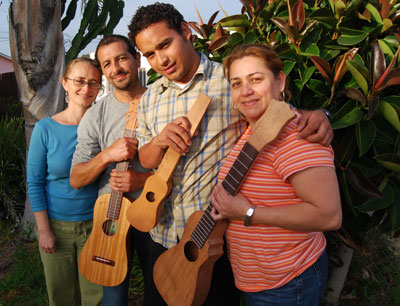Jorge Bonifaz Mijangos
Mexican son jarocho luthiery
Son jarocho encompasses a tradition of music, dance, and vocal improvisation from Veracruz, Mexico, that traces its roots to African, Spanish, and indigenous influences. Son jarocho music thrives on improvisation, humor, spontaneity, and its continuously evoution to reflect the experiences, witty sarcasm, politics, and heroism of each generation. Jaranas are the fundamental instruments used in son jarocho, and their complex string strumming techniques provide the rhythmic framework of this music. Jaranas are traditionally made of Spanish cedar or mahogany, come in various sizes and typically have eight strings (three pairs flanked by two singles). The guitarra de son has just four to five strings, which are plucked with a sliver of cow horn to improvise the bold and percussing melody lines.
Although typically the role of luthier (instrument maker) is one learned and passed on through many generations, in Veracruz, luthiers have been primarily the musicians themselves. In many families, it is expected that everyone can play, sing, dance, and often make an instrument. In fact, customarily people wanting to learn son jarocho music have been instructed to make their own instrument first.
Jorge Bonifaz Mijangos came to jarana luthiery by way of the music. In his late teens, musicians visiting his home of Chiapas, Mexico, from Veracruz introduced him to son jarocho and invited him to play with them. He became enamored with the jaranas’ sound and rhythms and a few years later, decided to attempt to make one for himself. His first jarana was made through observing an intrument carefully and simple experimentation. After moving to California, Jorge continued to study jarana construction and performance, finding here a rich and growing son jarocho community. Jorge has studied with luthiers Carlos Carbajal from Mexico City, Mexico, and Daniel Lopez Romero, from Xalapa, Veracruz, one of the region’s most recognized luthiers.
In 2008, Jorge was a master artist in ACTA’s Apprenticeship Program, working with apprentice Juan Francisco Parroquin. During their apprenticeship, Jorge taught Juan Francisco ancient and contemporary methods to construct guitarra de son, including planning and design of the instrument, selection of wood and materials, hands-on woodworking techniques, and constructing or “voicing” the sound board.


